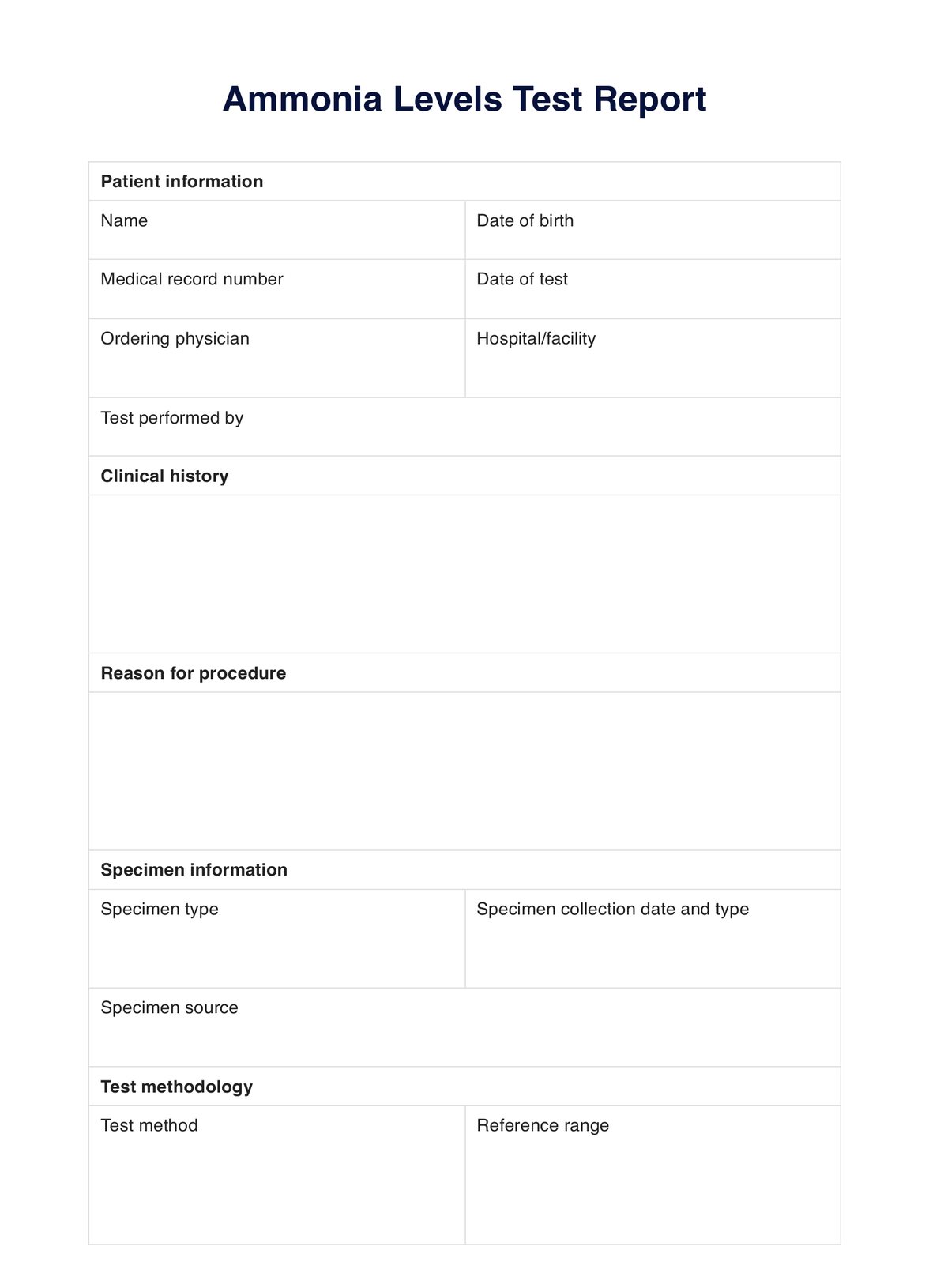Healthcare professionals such as doctors, nurses, and dietitians may order an Ammonia level test for patients with liver disease or dysfunction symptoms.

Ammonia Levels Test Report
Get access to a free Ammonia Levels Test Report template. Create detailed reports for ammonia level testing and monitor potential hazards.
Ammonia Levels Test Report Template
Commonly asked questions
A blood sample is usually taken from the patient's arm or hand and sent to a laboratory for analysis. The test can also be done using a small amount of cerebrospinal fluid (CSF) from a lumbar puncture.
Ammonia Levels Test Reports assess the ammonia level in a patient's blood or cerebrospinal fluid and diagnose potential liver or metabolic disorders. They can also monitor progress and treatment effectiveness in patients with known liver disease.
EHR and practice management software
Get started for free
*No credit card required
Free
$0/usd
Unlimited clients
Telehealth
1GB of storage
Client portal text
Automated billing and online payments











